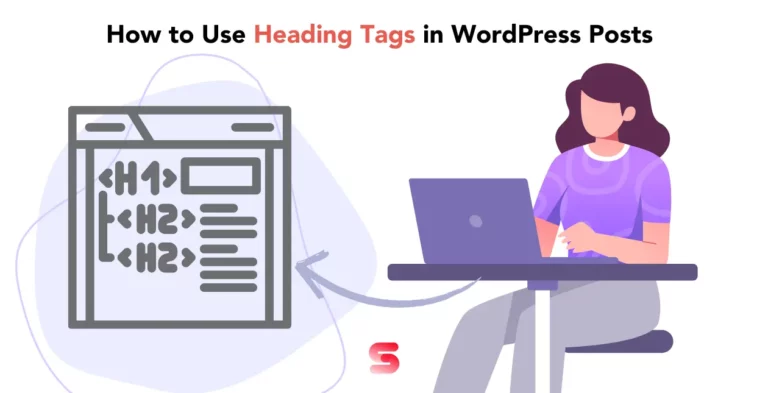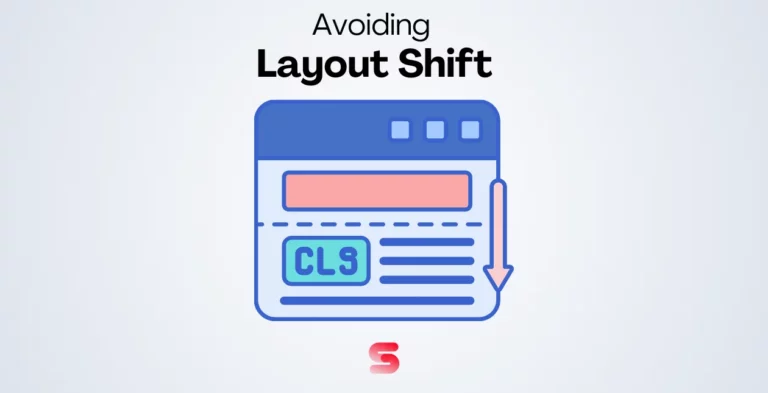You may be concerned about page performance if you operate a WordPress website.
In the first few seconds of visiting your website, the visitor is sure whether to stay or depart. A visitor is 90% more likely to leave a page that takes longer than five seconds to load.
A sluggish website with poor load times may result in fewer visits and conversions for your WordPress site. Running a speed test can help you determine how quickly your page loads, but it won’t help you improve performance.
Websites with faster load speeds have lower abandonment rates and perform higher in Google search results. That is why it is important to Reduce Server Response Time.
Reducing server response time means speeding up how quickly a web server responds to a user’s browser request.
We will go over how to avoid poor server response times in this article, focusing on how to shorten server response times.
What is Server Response Time?

When a device (such as a computer) successfully submits a request to the server to load a web page, the server response time measures how long it takes the device to get feedback from the server.
Many web apps require this feedback to operate, it is a crucial metric to track. In addition, a slow server response time causes the user to wait a long time while the website is either not displayed at all or the website is displayed incorrectly (with partially loaded graphics, broken layouts, etc.).
As a result, a poor server response time will impact load times and the users’ visual stability, which is assessed using a different metric called cumulative layout shift (CLS).
Technically speaking, server response time is also known as Time to First Byte (TTFB), as it calculates how long it takes the server to give a user one byte in response to their request.
Overall, Server response time is- the duration it takes your server to load the required HTML to begin displaying the page, after deducting network delay between Google and your server.
There may be some variation from one run to the next, but the variances should be minimal. A very varied server response time may signal a performance concern.
Why is Server Response Time Important?
There are two main reasons why server response time is important-
User Experience(UX)
Users anticipate fast page loads. According to studies, a percentage of more than 40% of people leave websites that take longer than three seconds to load.
Slow loading times are caused by a slow server response, which can annoy the visitors and drive them away from your website. Thus, decreasing your sales.
Search Engine Ranking (SEO)
The speed at which a website loads is taken into account by search engines such as Google Search Engine results, your website may suffer if the server responds slowly.
This means that if your website loads slowly and your competitors have a better loading speed users are less likely to stay on your website.
What Is Good Server Response Time?
Request phases start and elapsed time relative to the request start:
| Event | ||
|---|---|---|
| Blocking | 0ms | 7.2ms |
| DNS Lookup | +7.2ms | 18.3ms |
| Connecting | +25.5ms | 0.7ms |
| Sending | +26.2ms | 0.4ms |
| Waiting | +26.6ms | 111.8ms |
| Receiving | +138.4ms | 0ms |
Event timing related to the request start:
| DOM Loaded | +988ms |
| First Contentful Paint | +1.22s |
| First Paint | +1.22s |
| Onload | +1.52s |
| Fully Loaded | +2.02s |
Google recommends that you goal for a response time of less than 200 milliseconds. Anything more than 500 ms is problematic; a TTFB of 100 ms is optimal.
Every user must experience this time consistently. It shouldn’t change based on where the users are located.
Google divides websites into three categories according to the speed score they obtain:
- Quick (90–100)
- On average (50-89)
- Sluggish (0-49)
Google’s data show that 10% of websites are fast and 50% are slow. With 40% of websites ranking average, there is space for improvement.
A web page’s load time can be increased by optimizing images, minimizing HTTP requests, and using a content delivery network (CDN), among other strategies.
How to Reduce Server Response Time
Server response time is an important website performance statistic.
The user experience (UX) of your website is greatly influenced by the server response time, which is the time it takes for the webserver to execute a request and deliver a reply to the user’s browser.
Implement the following suggestions in this article to quickly improve your server speed or speed up server response time.
Check that you are utilizing a reliable hosting service
Your hosting service might be to blame for your slow server response time, so make sure you’re utilizing a trustworthy and ideal hosting company.
Use a dedicated hosting provider, but we all know how pricey these can be. There are, however, adequately optimized shared hosting packages that might be a cost-effective option for tiny websites.
When deciding between different hosting provider packages, look for online feedback and suggestions for providers who can maintain a fast and stable server response time
If you have the funds, a dedicated server is preferred, it may greatly speed up your website.
Consider using a Content Delivery Network (CDN)
A CDN functions as a geographically dispersed network of servers, greatly enhancing server response time.
The CDN points users to the closest server inside its network when they request a website. This results in a large reduction in the physical distance that data must travel, which speeds up loading times.
On the edge servers, CDNs keep frequently visited static assets such as CSS stylesheets, JavaScript scripts, and pictures.
The closest edge server can provide this content directly to a user upon request, avoiding the origin server and significantly speeding up response times.
The advantages of CDN are-
Reduced Latency– By storing material closer to the user, a CDN can assist in minimizing server response time. This can assist to shorten the time it takes a user to get material from your server.
Decreased Server Load– By managing an amount of content distribution, CDNs relieve the strain on the origin server.
By doing this, the ability of the server to generate dynamic content is enhanced and its overall performance is further enhanced.
Keep all information current
Performance improvements are frequently introduced in new versions of the applications you use. That is why you should keep your WordPress themes and plugins updated.
To save space, it’s generally the best practice to maintain the themes and plugins you use and eliminate the rest.
Improve your database
You may significantly increase the performance of your server by using database optimization in your content management system.
Databases lose some of their efficiency in storing and retrieving data as they grow. Reducing the size of the database, optimizing its structure, and removing unwanted data are all important to increase database performance.
The quicker the database finishes its work, the quicker the server answers the request from a website visitor. The type of database and the database management tools used determine the different database optimization methodologies.
Web providers frequently grant users access to direct management interfaces such as cPanel or phpMyAdmin. These tools let users optimize and manage their databases in a graphical interface. Expert users can write their custom scripts to schedule and automate optimization tasks.
Modern CMSs often provide a reasonably simple method for database optimization. For instance, WordPress has several plugins that make it simple to carry out this task.
Owners of WordPress websites can also manage their database with phpMyAdmin or cPanel.
Nevertheless, plugins for WordPress database optimization are also installable. These plugins can help you expedite the following tasks because they were designed with WordPress database performance in mind:
- Removing pointless information, like spam comments and post edits
- Database table defragmentation and compacting
- Removing items from the trash folder
- Automating cleanups for databases
WordPress plugins for database optimization also give other capabilities like data compression and caching, speeding up data delivery to the user.
Make use of server caching
When navigating a website, users send the same or comparable server requests. Data and server answers that are frequently accessed can be cached.
Rather than answering the same queries over and over again, the server returns content that has been stored (cached).
By storing frequently requested material, server caching can assist in minimizing server response time.
Some strategies can assist in shortening the time it takes the server to create a response and accelerate the delivery of content.
- Running database queries-The queries can be reduced by saving the results of frequent or repetitive inquiries,
- Caching of web pages- Place cached copies of fully rendered web pages. Servers can deliver these pages without further processing.
- Browser storage- Give browsers instructions, on what files to save locally on the user’s device.
- Pre-Caching– Examine how users behave and plan for future requests. Pre-loading resources that are most likely to be required for later.
- Caching of objects– Cache the answers to API calls and the outcomes of intricate computations. Scripts don’t have to handle the same requests repeatedly or access the API more than once.
Content Management System (CMS) owners can set up page, object, browser caching, and extra cache optimization capabilities through an intuitive interface by installing caching plugins.
Popular WordPress caching plugins include WP Rocket, WP Super Cache, and W3 Total Cache.
Invest in an effective bot management system
Bots account for around half of all web traffic worldwide. If your server receives more requests than it can handle the response time will be delayed.
Using a bot management system, such as DataDome, may assist you to control traffic and minimize server response time in two ways:
- Providing Service to Genuine Visitors
- Server Bandwidth Optimization
Get rid of 404 errors
Users receive 404 errors when they try to access a page that is not available. These requests continue to use up resources on your server, which might result in a slowdown if there are too many.
The free and useful Google Webmaster Tools is one of several plugins and tools you can use to find 404 error URLs on your website.
Check the traffic they bring in once you’ve located the 404 issues on your website. If no traffic is coming from the links, you may leave them alone.
Don’t use online fonts
On more recent websites, web typography or web fonts have grown in popularity, but if they aren’t properly optimized, they can put additional stress on your server and slow down the speed at which your page renders.
Web fonts fundamentally increase the number of HTTP queries sent to external sites, which explains why. As a general guideline, only provide character sets utilized on the site and use web font styles when essential.
Keep an eye on PHP usage
Multiple concurrent PHP scripts on the server might result in increased resource utilization, slowing down the server’s capacity to offer a page to a visitor.
The PHP script you execute isn’t abusing critical CPU and memory resources. Reduce load times by avoiding pointless database queries and by using caching techniques.
PHP versions that are too old provide a serious security risk. This procedure needs to be completed manually because certain hosting providers do not automatically upgrade PHP.
PHP code or the command line can also determine your PHP version. If you have a WordPress website, use the PHP Compatibility Checker plugin to confirm the version.
Update to a more recent version of PHP via cPanel or by contacting your hosting provider.
Pre-fetching
Pre-fetching entails anticipating and carrying out instructions before the user ever asks them. For instance, loading certain links or material in advance by assuming the user would make more queries in the future.
Modern browsers frequently enable pre-fetching.
There are generally three forms of pre-fetching:
Link Pre-Fetching- You can do link pre-fetching if there are only one or a few links on a page and you are certain that a user will click on a certain link.
This may be used, for instance, to speed up the loading of the shopping cart page after a user has added the products, to provide a more reliable user experience on the website.
DNS Pre-Fetching- For quicker loading, domain names are converted in advance to IP address formats.
Pre-Rendering- Pre-rendering the entire page or only a few items
While pre-fetching is unquestionably an effective way to decrease server response time, it requires a thorough understanding of user behavior to avoid resource waste.
Reduce bloat and resource sizes
If WordPress is the platform for your website, choose the greatest theme available.
WordPress themes have a variety of JavaScript and PHP scripts that, if not optimized, can significantly slow down your server’s response time.
Be sure to read reviews and research the theme’s developer before installing.
And employ optimized, lean plugins (or add-ons/extensions) if your site isn’t WordPress-based to avoid having slow response time for your server.
Minify Scripts
Most websites today are loaded with visual elements such as photographs and videos. Before uploading images and videos to your website, ensure they are optimized and compressed.
There are applications available that enable you to compress files in mass, and they may drastically reduce file sizes and improve server response time.
CSS determines how a website will appear and function for the websites. They can consume a lot of server storage space, and JavaScript is no exception.
Minifying means- compressing the unneeded spaces, line breaks, and characters from CSS and JavaScript codes to reduce file size and enhance processing performance.
Again, if you’re using WordPress, several plugins may assist you with this.
FAQs
How can you check your current server response time?
You may verify your current server response time using many tools, but the convenient Google Pagespeed Insights is usually sufficient.
What is an ideal server response time?
Google claims a website responds quickly when the TTFB is < 200 ms. So: It’s great if your server responds in less than 100 ms. A decent range is between 100 and 200 milliseconds. Acceptable response times are between 200 ms and 1 second, however, they should be improved.
What is the result of a long server response time?
Poor user experience, decreased website traffic, and poorer search engine results might result from a slow server response time.
Why is it important to reduce Server Response Time?
Google claims that users will leave a website if it takes longer than two seconds to load, as the server response time influences how quickly your page loads. Therefore, a long response time will result in a higher bounce rate.
How can I decrease the server response time?
Some actions to decrease server response time are- reducing HTTP requests, optimizing database queries, compressing files, and using content delivery networks (CDNs) to distribute content.
What happens when you speed up the server response time?
Speeding up server response time may- Improve visitor experience, decrease bounce rate, and Improve SEO results.
Is coding required to decrease server response time?
Reducing server response time involves various tactics, including code optimization, caching, minimizing HTTP requests, and using efficient programming languages. While coding isn’t the sole factor, it plays a little role in improving website speed.
How to improve a server response time of more than 200 ms?
To improve server response time (>200 ms), focus on better hosting, optimized configurations, managing website traffic, organizing resources efficiently, and implementing effective caching strategies for faster page loading.
Can CDNs improve Server Response Time?
Yes. CDNs can improve server response time, but their main focus is static content delivery. Further steps may be necessary to optimize other components such as database interactions and server-side scripting.
Conclusion
The server response time is one of the key elements in determining how quickly your website loads.
Reducing server response time is a critical aspect of optimizing website performance. A fast server response time ensures that web pages load quickly, providing a better user experience and potentially improving search engine rankings.
However, achieving a fast server response time requires a combination of factors, including server setup, network latency, database performance, and website design.
If your website relies heavily on database queries, optimizing database performance can help reduce server response times. This includes using indexes to speed up query execution, minimizing the number of queries, and optimizing complex queries for better performance.
Additionally, using database caching techniques can help reduce the load on your database server and improve response times.
The design of your website can also impact server response times. Complex and inefficient website designs can lead to longer response times, especially if they require multiple server requests to load.
Simplifying your website’s design, avoiding unnecessary elements, and optimizing images and other assets can also help improve response times.
To increase user satisfaction, search engine rankings, conversions, and cost efficiency, server response time must be decreased.
This article has covered various tactics that can be used to reduce server response time. We assure you by putting the right suggestions into practice, you can decrease server response time and enhance your website performance.



